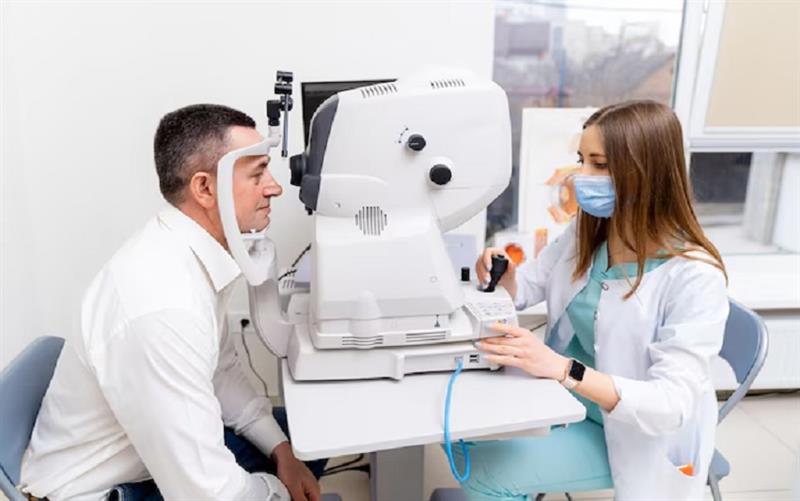
Modern medical software solutions are transforming daily task management for healthcare personnel, resulting in increased productivity, accuracy, and patient happiness. These solutions free up healthcare providers to concentrate more on providing high-quality care by streamlining workflow, increasing communication, and automating administrative activities. Using cutting-edge medical software to optimize staff performance increases productivity and guarantees that healthcare businesses can keep up with the constantly changing needs of the market. Any healthcare facility hoping to maintain its competitiveness and deliver top-notch patient care must invest in the appropriate medical software solutions.
The contemporary healthcare landscape demands unprecedented levels of efficiency, precision, and productivity. Healthcare professionals are under pressure to manage growing administrative responsibilities while providing high-quality care. Sophisticated medical software solutions have become a vital remedy, allowing healthcare teams to improve staff effectiveness, increase communication, and expedite procedures. We'll look at how medical software can assist healthcare companies increase productivity and enhance employee performance in this blog.
1. Automating Routine Tasks
Automating repetitive and normal tasks is one of the most important benefits of modern medical software systems. Automation can decrease human error and free up staff time for tasks like data entry, billing, and appointment scheduling. Allowing software to take care of time-consuming administrative duties frees up healthcare staff members to concentrate more on patient care, which increases output and lowers burnout.
2. Enhanced Patient Data Management
A digital platform that is centralized for the storage, retrieval, and administration of patient records is offered by medical software. Healthcare professionals can more quickly and efficiently offer care by having safe access to a patient's lab results, treatment plans, and medical history thanks to electronic health record (EHR) systems. Employees may access and amend records instantly, which facilitates quicker service delivery and better-informed decision-making.
3. Improving Communication and Collaboration
Improved teamwork and communication within healthcare organizations are made possible by sophisticated medical software. Staff members can keep in sync and minimize misunderstandings by using tools like task management features, shared calendars, and secure messaging. These technologies also increase workflow efficiency. Teams that function well together provide quicker, better-coordinated care to patients and lessen staff frustration.
4. Reducing Errors with Decision Support Tools
Both patients and healthcare providers may suffer grave repercussions as a result of medical errors. Clinical decision support tools are a common feature of advanced medical software systems that help with patient diagnosis and treatment. To assist healthcare personnel in making wise decisions, these systems offer real-time data, alerts, and reminders. Additionally, they can identify possible errors like improper dosages of medications or possible allergic responses, enhancing patient safety and lowering expensive errors.
5. Optimizing Billing and Revenue Cycle Management
In the healthcare industry, financial management is crucial, and sophisticated software tools may make revenue cycle management and billing more efficient. Automated billing features expedite payment processing, lower administrative errors, and guarantee adherence to healthcare laws. Employees can handle patient billing questions, manage denials, and track claims with ease, which boosts income and improves cash flow.
6. Reducing Staff Burnout
High patient loads and administrative workloads can cause burnout and low job satisfaction in healthcare personnel. Healthcare companies may lessen the amount of physical labor and stress that employees experience by putting in place digital technologies that automate repetitive operations and streamline workflows. Improving work-life balance not only helps retain valuable people but also increases productivity.
7. Data Analytics for Performance Improvement
Healthcare administrators may monitor and enhance staff performance with the use of advanced medical software solutions, which provide them access to comprehensive statistics. Administrators may monitor key performance indicators (KPIs) such patient wait times, appointment volumes, and billing efficiency with real-time data. By using this data, inefficient regions may be found, employee schedules can be optimized, and overall productivity can be raised.
8. Telemedicine Integration
Medical software tools are progressively incorporating remote care solutions due to the growth of telemedicine. Without the need for in-person visits, these technologies enable healthcare professionals to conduct virtual appointments, write prescriptions, and keep track of patients' progress. As a result, patients have better access to care and the in-office staff is not overworked, allowing for continuity of care even during peak times.
9. Seamless Staff Scheduling
Keeping employees scheduled effectively is essential to sustaining high performance levels. Scheduling systems that let administrators establish, modify, and improve staff schedules in real-time are frequently included in medical software solutions. Healthcare facilities can avoid understaffing or overstaffing, which improves patient care and creates a more balanced workload for staff members. This is achieved by making sure the necessary personnel are available at the appropriate times.
10. Ensuring Compliance and Security
Strict laws pertaining to patient privacy and data security, such HIPAA in the US, must be followed by healthcare professionals. Medical software solutions assist businesses stay in compliance with regulations by ensuring that private patient data is accessed and stored securely. In order to guarantee that patient data is always protected, advanced software systems also offer audit trails, encryption, and secure access controls.
11. Customizable Dashboards for Personalized Workflows
Medical staff can customize their workflow according to their individual roles and duties with the help of configurable dashboards that are frequently included with software products. Staff members can enhance their performance on an individual and team level by efficiently prioritizing their tasks and having convenient access to pertinent patient data, calendars, and task lists.
12. Mobile Accessibility for On-the-Go Efficiency
These days, a lot of cutting-edge medical software programs are mobile-friendly, allowing medical professionals to interact with personnel, access patient data, and do administrative duties from any location. This degree of flexibility enhances the effectiveness of care delivery and speeds up response times by enabling doctors and staff to remain productive even when they are not at their workstations.